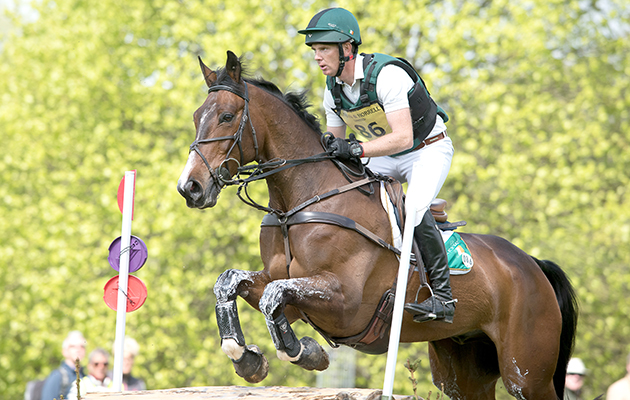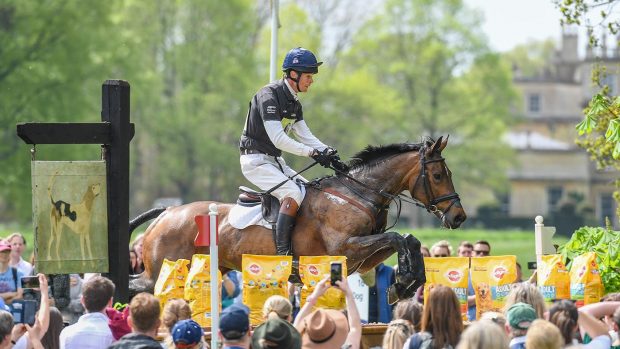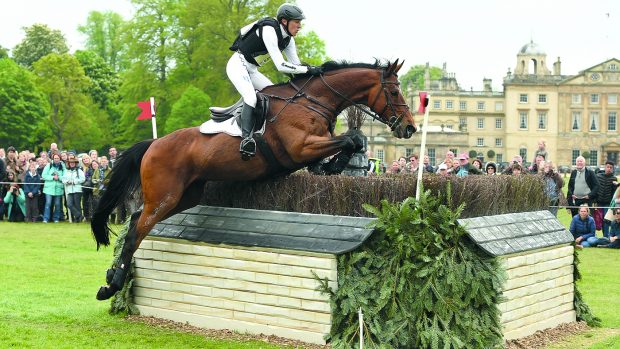Event rider Padraig McCarthy explains how repetition and praise helps to build up confidence in a green horse
Former showjumper Padraig McCarthy switched to eventing, and competed in his first CIC* (now CCI2*-S) in late 2013. Since then he has represented Ireland at the 2015 European Championships at Blair Castle and was selected to compete at the 2016 Olympics in Rio and also won double silver at the 2018 World Equestrian Games. Originally from Tipperary, Padraig is now based in Devon with his wife Lucy.
Padraig says:
Some horses are very brave, natural cross-country animals right from the outset, but a lot need a little more help and work to develop their confidence. In particular, very careful horses can be wary and spooky when they’re first introduced to natural obstacles, but the right groundwork can help them develop into cross-country machines as they mature.
Training the stars
- Simon Porloe was probably the spookiest horse I’ve ever ridden. He was a prime example of a horse who needs his blood up in order to get from A to B in a straight line. He did lots of following other horses as a youngster, with my wife Lucy, but it was more about getting his adrenalin pumping than overcoming any great nervousness or anxiety.
- A season’s hunting with the Taunton Vale was the making of Lucy’s top five-star horse Shaabrak. He wasn’t spooky about fences as a youngster, but a bit fussy about mud and where he would put his feet.
Tackling the issue
1. I tend to introduce our young horses to natural obstacles as soon as they’re ready to start jumping when they’re being broken in. That way, the horses just accept cross-country fences as part of everyday life.
We keep it simple to start, using small logs and roll-tops, which have the added advantage of a good profile to teach the horse to make the right shape over the fence.
2. Repetition is paramount in the development of a young horse. When a horse negotiates an obstacle for the first time, it can be with an enormous leap or a bit of a scramble.
Don’t just breathe a sigh of relief that you’ve got to the other side in one piece — it’s so important to go back and jump that same fence several times until the horse is just popping it confidently and without fuss.
It’s also a good idea to go back over the previous day’s established lessons and try to add one or two new ones to the horse’s repertoire.
3. Water and ditches are the most typical bogey fences for young horses and we almost always have an older lead horse on hand when we first tackle those subjects. With a young horse I like to see what sort of reaction they have to the new question and give them the opportunity to go on their own first. But, if they hesitate for more than 20 or 30 seconds, I’ll bring in the other horse to give them a lead.
Again, repetition and patience is essential. Use the lead horse until the young horse is confident, and then ask him to try it again on his own. Praise is also massively important in developing the horse’s confidence across country.
4. I find the best way to get a horse more forward-thinking is to jump a course following another horse, or preferably a group of other horses, rather like a team chase scenario.
Often the stop-start nature of cross-country schooling doesn’t lend itself to getting horses thinking forward, as they’re always jumping a fence and pulling up. Actually travelling from A to B gives a new sense of purpose to the job and makes much more sense to the horse.
Following a little gang will usually get the adrenalin up of even the most cold-blooded horse, and once they realise cross-country is fun they will often not look back.
Continued below…

#SundaySchool: Imogen Murray on the bounce grid exercise

#SundaySchool: Ben Way on improving a horse’s focus and rideability

Subscribe to Horse & Hound this spring for great savings
Consider this…
- Repetition and praise is the key to producing a proficient and confident cross-country horse.
- Make use of a horse’s natural herd instinct and get a lead or go hunting. Hunting is one of the best schooling grounds for producing forward-thinking, brave cross-country horses.
For all the latest equestrian news and reports, don’t miss Horse & Hound magazine, out every Thursday



